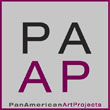« Reviews
Ed Moses
Ed Moses: Drawings from the 1960s and 70s
Los Angeles County Museum of Art
Now and Then
William Turner Gallery - Santa Monica, CA.
By Megan Abrahams
Ed Moses: A Los Angeles Icon
Terror is my driving force. Paint is the medium.
Ed Moses, September 2014
If art appreciation has something in common with detective work, early in his career, Ed Moses left a trail of clues foreshadowing the artist he was yet to become. In the past year, a string of landmark solo exhibitions focusing on phases of the artist’s oeuvre have offered breathtaking insight into the extraordinary depth and range of his enthralling and important body of work, along with evidence behind his motivation and method.
Visible throughout “Ed Moses: Drawings from the 1960s and 70s” at the Los Angeles County of Museum of Art (LACMA) are keys to both the man and the eventual paintings he went on to create and continues to produce today, decades later. The 89-year-old artist systematically laid the foundation for his future work by devoting almost two decades primarily to drawing. Moses has persisted in the continual evolution of his vision throughout a 60-year career of constant reinvention after becoming an artist almost by accident. For someone with a self-declared compulsion for creating art, it’s striking that Moses was introduced to art via such a serendipitous route.
“How I came to be a painter is a joke. I was struggling in pre-med, couldn’t even use a slide rule,” Moses said during a private visit to his studio last September.

Installation photo of the exhibition “Ed Moses: Drawings from the 1960s and 70s” at the Los Angeles County Museum of Art (LACMA), May 10 – August 2, 1-15. © 2015 Ed Moses. Photo © Museum Associates/LACMA.
In 1948, Moses was enrolled at Long Beach City College, disillusioned after two years of pre-med studies, when some friends urged him to meet an art teacher they called a Bohemian. “I wanted to see what a Bohemian looked like,” he said.
The teacher was Pedro Miller from the Chicago Art Institute. The first time Moses saw him, Miller drove into the art department parking lot in his convertible and stepped out of the car barefoot, his hair caked with clay and paint. The teacher proceeded to the classroom, overturned a trash can, sat down and started lecturing.
“I’d never seen a teacher do anything like that,” said Moses. “So I immediately signed up.”
When Miller set up a still life à la Cézanne, the other students assessed the composition by holding their pencils in the air. Moses didn’t know what to do. As Miller approached, Moses dipped his fingers into the pots of color and made a finger painting. Miller took one look and said, “Now here’s a real artist.”
It was a turning point for the young student. “He saved my life,” Moses said.
Today a Los Angeles icon, Moses has played a formative role in the West Coast art scene. One of the first artists to show at the famed Ferus Gallery, Moses later joined the art faculty at UC Irvine, where he went on to teach many young artists who followed. Painting is still part of his daily routine. From 6 in the morning until 2:30 in the afternoon, he works in a large outdoor studio in the light-filled courtyard of his home on a quiet residential street in Venice, Calif. An outdoor studio was a requirement, as Moses discovered after hosing down his canvases in a previous New York studio–causing water leakage to the floor below.
Next to the courtyard, behind a storage room stacked with canvases, is a hidden gallery featuring a magical installation Moses created, inspired by Labyrinths, a collection of stories by Jorge Luis Borges. Canvases in solid colors and crackle paintings alternate with warped mirrors on which Moses painted delicate droplets. Reflected in the mirrors, the paintings morph into wavy shapes. From the vantage point of the spinning chair in the center of the room, the reflected images change in infinite hallucinatory variations.
Last September, Moses was busy selecting work to be featured in “Cross-Section,” his retrospective at UC Irvine Claire Trevor School of the Arts (Oct. 11-Dec. 13, 2014). While his studio assistant displayed different canvases for consideration, Moses demurred on the very notion of being labeled an artist. “I’m an obsessive painter. I’m not an artist,” he said.
The topic of obsession comes up a lot and may be a key to the resonance of his work, the longevity of his career and his success in realizing his vision. Moses likens his art to the study of anthropology, referencing how early man became conscious of his own existence when he saw his footprint in the mud. “That’s why I exist,” he said. “I had to leave marks, compulsive marks, repetitive marks, pressing, pressing, over and over again, showing I exist. I guess that’s what I was doing in a way.”
Among the most compelling early marks Moses made are his flower drawings of the early 1960s. Moses acknowledges the influence of Jasper Johns in his use of repeated design motifs. The series of graphite flower drawings were inspired by an oil cloth the artist found on a trip to Tijuana. The flower images tie in with the theme of obsession, repetition, making an indelible mark in the mud. The drawings are also precursors to the large-scale craquelure paintings Moses produced 50 years later. The crackle paintings came about when Moses was creating monochromatic works on canvas, trying to replicate a crackle effect with paint. He developed what he calls his “secret sauce,” which he applies beneath the layer of paint. When Moses hit the canvas in a certain way, he discovered it produced a rippling crackle, which he can manipulate to create a gorgeous repeated floral effect.
The mechanical drawing classes Moses took in high school gave him an added technical acuity, informing his drawing and approach to painting. Although Moses has produced numerous vast abstract canvases without a figurative, representational or literal narrative, much of his work is anchored by a concern with line. This is particularly telling in the grid drawings of the 1970s, a theme that reemerged in the later diagonal grid paintings. Subtle vestiges of the grid crop up in the new generation of paintings in his latest solo show, “Now and Then” at William Turner Gallery from June 6 to August 15. These paintings would be a complete surprise if not for the traces of intersecting lines in the form of crosses repeated across the surface. Created by a stencil, the presence of the crosses is a thematic thread superimposed over other marks in the compositions. Layers of marks allow an intriguing glimpse into his process.

Ed Moses, Stares Dwn, 2015, wood, aluminum rails, angle iron and paint, 80” x 70.” Courtesy William Turner Gallery, Santa Monica, CA.
“I like the idea of seeing evidence of the process and application. That’s part of the beauty of it. The work reveals some of the history of the mark making, and then one day it lights up, self-illuminates. Wow!” Moses said in a conversation with LACMA curator Leslie Jones, hosted by William Turner the week of the opening.
Mostly rendered on wood panels, the new series reflects the solid substantive ground on which it is painted. Primary colors–a preponderance of reds–and black predominate. The work is characterized by dots, drips and other marks that interplay with the crosses. Moses added unexpected embellishments–a soupçon of assemblage–although that’s not the intention.
“I never liked the idea of assemblage. It just sort of grew out of the situation,” Moses said.
Incorporating a sculptural element, in Stares Down (2015), ledges, which Moses calls “pockets,” project from the painted surface. Assorted wooden items rest inside-paint sticks used for stirring house paints, a stencil-cut tarantula and star shapes. Aluminum rails form a frame outside the border. Several of the new paintings have aluminum or copper rail frames as well as chains draped across the surface, hanging in loose curves-another version of line. Moses included the chains, found in a hardware store, because, “I like them. They look good.”
The metal rails are more integrated in some of the pieces than in others, as in Aleff (2015), in which Moses painted the rails in the blue palette of the painting they frame. What’s compelling is not that the embellishments complete the work, but how the paintings become more dynamic and engaging because of the added dimensional elements.
Last October, Moses and a coterie of artists and friends traveled on a bus chartered by Turner from Bergamot Station in Santa Monica to UC Irvine for the opening of the retrospective. There, Moses led his entourage through three galleries of paintings, each more stunning than the next, discussing his process with humor and candor while using his cane to point out details. The comprehensive survey showcased the vast range of the artist’s strategic exploration of the painted medium from the 1970s to the present. It’s apparent the life work of Moses is a continual exploration, in which he refuses to be harnessed to any single idea or avenue of expression, regardless of how rewarding that one direction might be. Instead, he excels at each concept and leaps on to the next.
Ultimately, Moses’ paintings are a fortuitous marriage of contrasts, a meeting of contrived accident and deliberate control. The artist, who abhors the label “artist,” prefers to be thought of as an inventor and discoverer. For Moses, it’s all about the continuing experiment. “It’s always the same,” he said. “I never get better, I often get worse. And sometimes I get lucky.”
Ed Moses: Drawings from the 1960s and 70s
(May 10 - August 2, 2015)
Now and Then
(June 6 - August 15, 2015)
Megan Abrahams is a Los Angeles-based writer and artist. A contributing writer for WhiteHot Magazine of Contemporary Art since 2009, she also writes for Art Ltd. Megan studied fine art in Canada and France and received her M.A. from the University of Southern California School of Journalism. She is currently writing her first novel.
Filed Under: Reviews




































Leave a Reply
You must be logged in to post a comment.